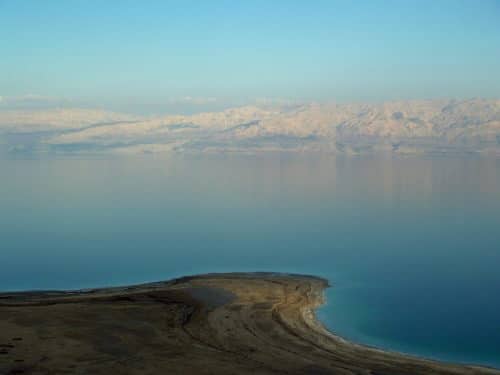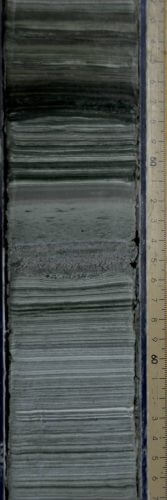Researchers at Tel Aviv University: We found evidence of the agricultural revolution under the bottom of the Dead Sea. Prof. Shmuel Marco: The content of the alluvium from 11,500 years ago indicates the dramatic changes in the Middle East

Researchers at Tel Aviv University drilled to a depth of 460 meters in the center of the Dead Sea - and found evidence of environmental changes as a result of the beginning of the agricultural revolution 11,500 years ago.
The research was conducted by Dr. Yin Lu under the guidance of Prof. Shmuel Marko, head of the School of Earth Sciences at Tel Aviv University, together with the archaeologist Prof. Danny Nadel and the geologist Dr. Nicholas Waldman from the University of Haifa. The results of the study were recently published in the journal Global and Planetary Change.
"The deep drilling was done with the aim of documenting the environmental changes that have occurred in the area over the past 200 years," says Prof. Marko. "After the drilling, which reached a depth of 460 meters below the bottom of the Dead Sea, we removed a transparent pipe loaded with materials that had accumulated over the years on the bottom of the lake. These materials were thoroughly studied according to the thin layers accumulated in the bottom and within complex geochemical analyses, which complement each other. The success of the research demonstrates the benefits of interdisciplinary collaboration between the natural sciences and archaeology."

In a careful examination of the annual sediment content to the bottom of the Dead Sea over the years, the researchers found an increase in the amount of sediment that reached the Dead Sea in floods 11,500 years ago. The amount of erosion increased dramatically relative to thousands of years earlier, and has remained very high ever since.
"The geological findings were compared to archaeological findings from the Dead Sea basin," explains Prof. Marko. "The archaeological research shows that at this time man began to settle in large villages, while transitioning from hunting and gathering to an economy based on agriculture, otherwise known as the Neolithic revolution, also known as the agricultural revolution."
The researchers attribute the increase in the amount of drift to the agricultural revolution, when, for the first time in human history, large villages were built throughout the Middle East. The increase in silt to the Dead Sea is tangible evidence of the impact of the agricultural villages on the natural environment: the changes that took place following the conversion of natural areas into agricultural fields, the felling of many trees in order to use them as raw material for building and the burning of forests in order to turn them into grasslands that allow grazing of domesticated animals such as sheep, Cattle and pigs.
"All these changes made the surface more vulnerable to drifting. The rains led more silt from slopes to the Dead Sea basin than in the period before the transition to permanent settlements and agriculture. The transition to agriculture took place during an interglacial period, after the last ice age that lasted from about 110 thousand years ago to about 20 thousand years ago. The deep drilling in the Dead Sea allows a comparison with the interglacial period that preceded the last ice age. It is evident that during the previous interglacial period, from about 130 to about 110 years ago, the amount of sediment that accumulated at the bottom of the lake was much smaller compared to the period when man developed agriculture and domestication of animals, therefore we attribute the large increase in sediment to the fundamental change in man's settlement patterns - and not only for climate change."
According to Prof. Marko, the study of man's influence on his environment in the past is critical to understanding our influence on the environment in the present. "These studies are critical to understanding the human contribution to global warming and the steps humanity must take to ensure future generations can live here. That's why we continue our research, among other things, by reconstructing the weather systems and the changes that occurred in them with the Earth's transition between ice ages and interglacial periods."

3 תגובות
Maybe the climate changes came first, and these created both more erosion and made agriculture possible?
That is, agriculture did not create erosion, but climate change is responsible for two phenomena at the same time, both increased erosion and agriculture (because a drier area now receives more water). In such a case there is no necessary connection between the drift and agriculture.
interesting,
Now it is appropriate to check the findings and compare them to the results of (shallow) drilling in the south of the basin,
A comparison that will allow data on periods and factors in which the southern basin was dry...